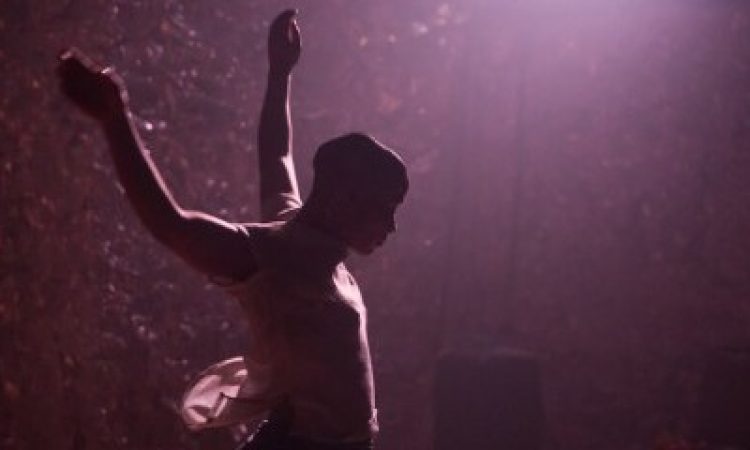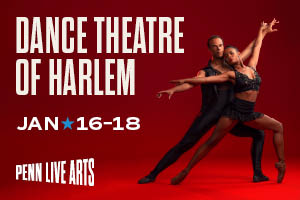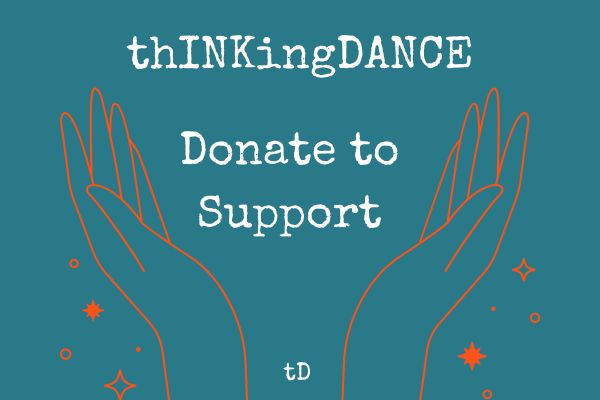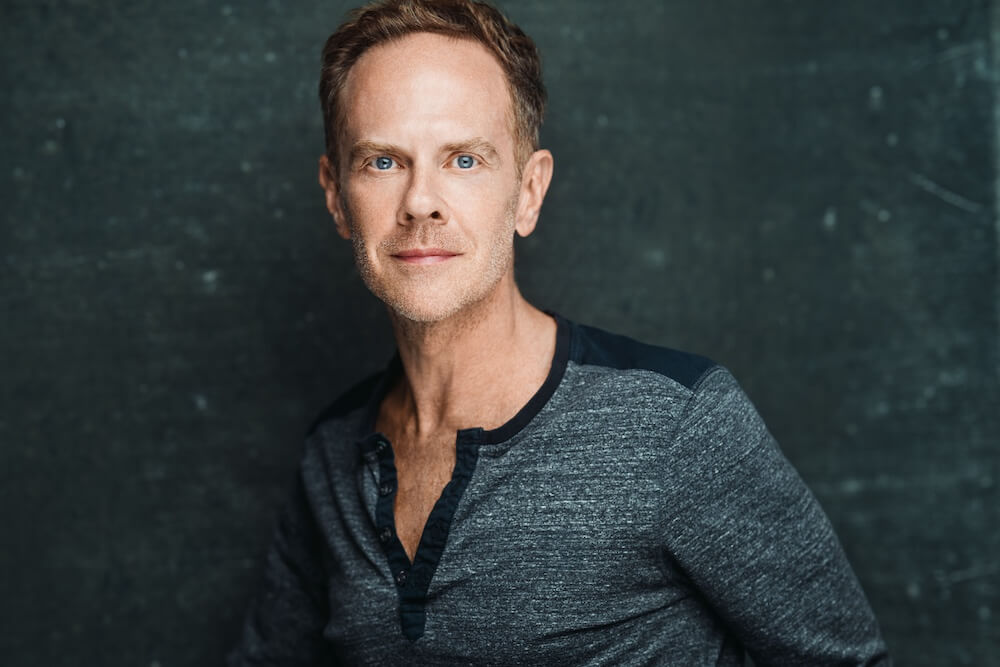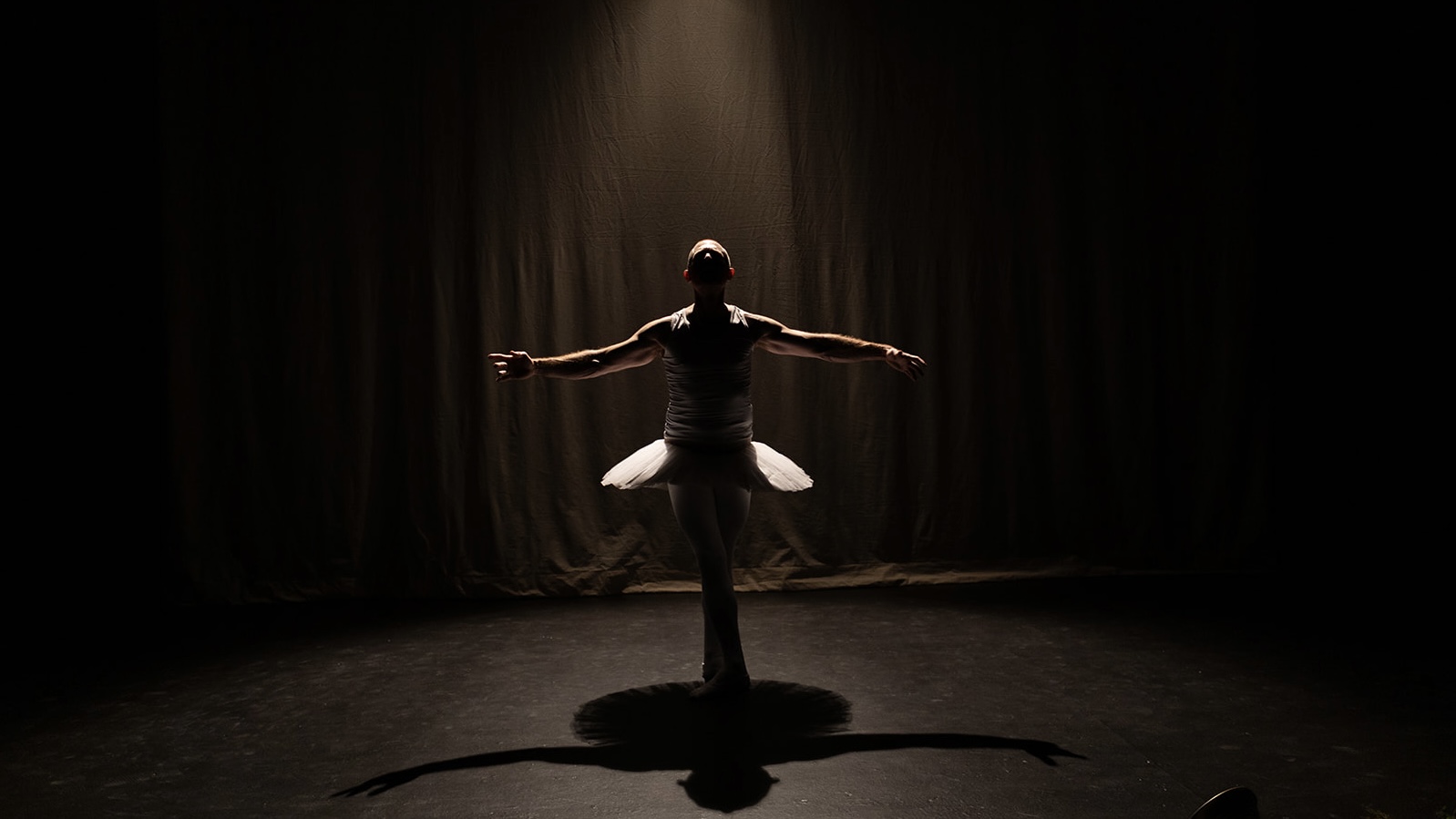In the midst of the COVID-19 pandemic and most recent chapter of the Black Lives Matter movement, Black Dance Stories was born. These weekly informal discussions, hosted on Instagram and YouTube, provide Black dance artists a forum to talk about life during these turbulent times. Black Dance Stories also offers an intimate look at the off-stage lives of the dancers, giving us insight into what makes them tick, and what moves them, literally.
Like all episodes in the series, this one features two artists: one from Burkina Faso in West Africa, one from Houston. Both artists exude a zest for life, are multidisciplinary artists, have a passion for storytelling, a history of activism, and ties to Philadelphia. All artists featured on the program use dance as a window into the Black experience.
Originally from Burkina Faso, Philly-based Olivier Tarpaga is a Lester Horton Award-winning dancer-choreographer and musician, a dance lecturer at Princeton’s Lewis Center for the Arts, director of the African Music Ensemble for Princeton University’s Department of Music, and founder and artistic director of Dafra Drum and Dafra Kura Band. He and his wife, dancer-choreographer Esther Baker Tarpaga, are co-founders of the Baker & Tarpaga Dance Project. Jasmine Hearn is a curator, director, choreographer, organizer, teaching artist, and a 2017 Bessie Award-winning performer. Hearn is a company member of Urban Bush Women and a 2019 Jerome Foundation Jerome Hill Fellow. Hearn recently produced Slow Danger, a duet album of “vocal work, sound work, and sound conjuring.”
Those tuned in to the episode represented a cross-section of the dance community, a veritable who’s who, as creator Charmaine Warren, a performer, producer and dance writer, was quick to note. Shout-outs were given to many audience members, such as Philly’s own Zane Booker (featured in episode 8) and Wendy Perron, former editor of Dance Magazine. Past episodes also read like a list of luminaries in Black dance, including Kyle Abraham, J. Bouey, Philly-based Rennie Harris, and others.
I would recommend this series to anyone interested in learning more about dancers, what inspires them, and where their dance journey led them. By the end of the evening I felt as if we all were old friends. In fact, throughout the program, Warren raised a glass in toast to her guests. I toast Warren for keeping members of the Black dance community and beyond connected during these fragmented times when the need to center Black stories is more obvious than ever.
Wearing a “Music is a weapon” T-shirt designed by a Burkina Faso native, a hat with upturned brim, and signature red sweater, Tarpaga greeted everyone with infectious enthusiasm and his ever-present smile. Coincidentally, this episode of Black Dance Stories aired on Oct. 15, a significant day in Tarpaga’s life. “It was the day I got closer to death.” On this date in 1987, when he was 9, the president of Burkino Faso, Thomas Sankara, was assassinated about four blocks away. Tarpaga explains that directly behind his school was a military camp, and he and his friends would jump over a wall to play soccer on the field there. On that day, they heard gunshots. Tarpaga admits that, as a young boy, he was more excited than afraid. One of his most vivid memories of that day is a military officer who, mid-shower, ran out of the building with soap in his hair, with only a towel around his waist, and brandishing an AK-47. “That was the urgency of the moment.” Tarpaga’s older brother made him run home, where his mother hid him under the bed. This incident influenced his work Declassified Memory Fragment (2015).
Fast forward to 2014, when Tarpaga not only witnessed but participated in the uprising in Burkina Faso prompted by attempts to change the constitution to allow then-President Blaise Compaoré to run again and extend his 27 years in office. Tarpaga recounted with pride how the artistic community mobilized in opposition. Approximately 1 million people marched from what is now known as Revolution Square to Parliament. “Our number is our strength,” he emphasized.
Like Tarpaga, Hearn also shared stories of their first protests. The week that Trayvon Martin was murdered, Hearn recalls sleeping outside the Pittsburgh mayor’s office overnight with throngs of other protesters. “Being there, and having that energy … was so important.”
Usually based in New York, at the moment, Hearn was online in Houston, broadcasting from the room they shared with their sister as a child. In their introduction, Hearn did not hold back. Like their shaved head, Hearn’s self-description laid bare who they are, as an artist and as an individual: “I am a dark brown-skinned, Black, queer person. I am a femme, a nonbinary, queer dear. I’m a lyricist. I’m a dancer, I’m a mover, I’m an artist. I’m a lover. I’m all brand new, and I’m also ancient. I’m an everyday student. I’m a teacher-artist.”
Tarpaga, too, is proud of who he is: “I don’t shy away from my Africanism. I don’t shy away from my dark skin. I don’t shy away from my accent.” During his many travels, Tarpaga encountered racial profiling over and over again. In Tokyo, for instance, he was asked if he sold drugs. And every time he landed in Brussels, the authorities would put him in jail at the airport. His 2012 work, Not Because You’re African, interprets these experiences with caustic humor. Tarpaga uses humor as a way to process having repeatedly been on the receiving end of racially based stereotyping.
“I’m just tired that people think being Black is about being tired, being pissed off and screaming. No!”
Again like Tarpaga, Hearn has drawn upon negative experiences to inform her art. Her piece if god left the lights on could we walk alone in the dark was a reflection on incidences of street harassment Hearn had experienced. It has been performed in Pittsburgh, Philadelphia, New York City, and Houston.
Both artists spoke of their artistic journey as dancers. Hearn told of numerous auditions, rejections, and acceptances, emphasizing that she accomplished the latter “by connecting, taking folks’ classes, going to workshops.”
Up-and-coming dancers might want to model Hearn’s attitude toward new opportunities, “making it a practice to put myself out there and be vulnerable.” When Hearn tried out for Pittsburgh’s Dance Alloy, she said “I entered the audition as if it were a free class.” Ditto for Hearn’s first grant application. “I thought of it as an essay prompt in an English class.”
“I have no expectations, just goals and dreams, and seeing how they unfold,” Hearn said.
Black Dance Stories is yet another example of how something good has come out of our pandemic-enforced isolation. Combining the power of storytelling and crossing geographic divides with the internet, Warren brings us all a little closer together each week.
Black Dance Stories, Episode #16
